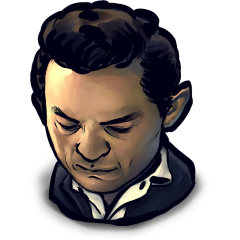ACC291 Final Exam Complete Solution NEW
1. Receivables are frequently classified as:
a. accounts receivable, company receivables, and other receivables.
b. accounts receivable, notes receivable, and employee receivables.
c. accounts receivable and general receivables.
d. accounts receivable, notes receivable, and other receivables.
2. Buehler Company on June 15 sells merchandise on account to Chaz Co. for $1,000, terms 2/10, n/30. On June 20, Chaz Co. returns merchandise worth $300 to Buehler Company. On June 24, payment is received from Chaz Co. for the balance due. What is the amount of cash received?
a. $700
b. $680
c. $686.
d. None of the above.
3. Which of the following approaches for bad debts is best described as a balance sheet method?
a. Percentage-of-receivables basis.
b. Direct write-off method.
c. Percentage-of-sales basis.
d. Both a and b.
4. Hughes Company has a credit balance of $5,000 in its Allowance for Doubtful Accounts before any adjustments are made at the end of the year. Based on review and aging of its accounts receivable at the end of the year, Hughes estimates that $60,000 of its receivables are uncollectible. The amount of bad debts expense which should be reported for the year is:
a. $5,000.
b. $55,000.
c. $60,000.
d. $65,000.
5. Use the same information as in question 4, except that Hughes has a debit balance of $5,000 in its Allowance for Doubtful Accounts before any adjustments are made at the end of the year. In this situation, the amount of bad debt expense that should be reported for the year is:
a. $5,000
b. $55,000.
c. $60,000.
d. $65,000.
6. Net sales for the month are $800,000, and bad debts are expected to be 1.5% of net sales. The company uses the percentage-of-sales basis. If the Allowance for Doubtful Accounts has a credit balance of $15,000 before adjustment, what is the balance after adjustment?
a. $15,000.
b. $27,000.
c. $23,000
d. $31,000.
7. In 2011, Roso Carlson Company had net credit sales of $750,000. On January 1, 2011, Allowance for Doubtful Accounts had a credit balance of $18,000. During 2011, $30,000 of uncollectible accounts receivable were written off. Past experience indicates that 3% of net credit sales become uncollectible. What should be the adjusted balance of Allowance for Doubtful Accounts at December 31, 2011?
a. $10,050.
b. $10,500.
c. $22,500.
d. $40,500.
8. An analysis and aging of the accounts receivable of Prince Company at December 31 reveals the following data.
Accounts receivable $800,000
Allowance for doubtful accounts per books before adjustment 50,000
Amounts expected to become uncollectible 65,000
The cash realizable value of the accounts receivable at December 31, after adjustment, is:
a. $685,000.
b. $750,000.
c. $800,000.
d. $735,000.
9. One of the following statements about promissory notes is incorrect. The incorrect statement is:
a. The party making the promise to pay is called the maker.
b. The party to whom payment is to be made is called the payee.
c. A promissory note is not a negotiable instrument.
d. A promissory note is often required from high-risk customers.
10. Which of the following statements about Visa credit card sales is incorrect?
a. The credit card issuer makes the credit investigation of the customer.
b. The retailer is not involved in the collection process.
c. Two parties are involved.
d. The retailer receives cash more quickly than it would from individual customers on account.
11. Blinka Retailers accepted $50,000 of Citibank Visa credit card charges for merchandise sold on July 1. Citibank charges 4% for its credit card use. The entry to record this transaction by Blinka Retailers will include a credit to Sales of $50,000 and a debit(s) to:
a. Cash $48,000 and Service Charge Expense $ 2,000
b. Accounts Receivable $48,000 and Service Charge Expense $ 2,000
c. Cash $50,000
d. Accounts Receivable $50,000
12. Foti Co. accepts a $1,000, 3-month, 12% promissory note in settlement of an account with Bartelt Co. The entry to record this transaction is as follows.
a. Notes Receivable 1,030 Accounts Receivable 1,030
b. Notes Receivable 1,000 Accounts Receivable 1,000
c. Notes Receivable 1,000 Sales 1,000
d. Notes Receivable 1,020 Accounts Receivable 1,020
13. Ginter Co. holds Kolar Inc.¿s $10,000, 120-day, 9% note. The entry made by Ginter Co. when the note is collected, assuming no interest has been previously accrued, is:
a. Cash 10,300 Notes Receivable 10,300
b. Cash 10,000 Notes Receivable 10,000
c. Accounts Receivable 10,300 Notes Receivable 10,000 Interest Revenue 300
d. Cash 10,300 Notes Receivable 10,000 Interest Revenue 300
14. Accounts and notes receivable are reported in the current assets section of the balance sheet at:
a. cash (net) realizable value
b. net book value.
c. lower-of-cost-or-market value.
d. invoice cost.
15. Apollo Company had net credit sales during the year of $800,000 and cost of goods sold of $500,000. The balance in accounts receivable at the beginning of the year was $100,000, and the end of the year it was $150,000. What were the accounts receivable turnover ratio and the average collection period in days?
a. 4.0 and 91.3 days.
b. 5.3 and 68.9 days.
c. 6.4 and 57 days.
d. 8.0 and 45.6 days.
ACC291 Final Exam Complete Solution NEW
1. An aging of a company’s accounts receivable indicates that $4,500 are estimated to be uncollectible. If Allowance for Doubtful Accounts has a $1,200 credit balance, the adjustment to record bad debts for the period will require a
a. debit to Bad Debt Expense for $3,300.
b. credit to Allowance for Doubtful Accounts for $4,500.
c. debit to Bad Debt Expense for $4,500.
d. debit to Allowance for Doubtful Accounts for $3,300.
2. The financial statements of the Melton Manufacturing Company reports net sales of $300,000 and accounts receivable of $50,000 and $30,000 at the beginning of the year and end of year, respectively. What is the average collection period for accounts receivable in days?
a. 36.5
b. 60.8
c. 96.1
d. 48.7
3. Stine Company purchased machinery with a list price of $64,000. They were given a 10% discount by the manufacturer. They paid $400 for shipping and sales tax of $3,000. Stine estimates that the machinery will have a useful life of 10 years and a residual value of $20,000. If Stine uses straight-line depreciation, annual depreciation will be
a. $4,100.
b. $4,072.
c. $6,100.
d. $3,760.
4. On January 1, a machine with a useful life of five years and a residual value of $40,000 was purchased for $120,000. What is the depreciation expense for year 2 under the double-declining-balance method of depreciation?
a. $28,800.
b. 23,040.
c. 48,000.
d. 38,400.
5. As a recent graduate of State University you’re aware that IFRS requires component depreciation for plant assets. A friend has asked you to succinctly explain what component depreciation means. Which of the following correctly describes component depreciation?
a. The method used to prorate annual depreciation on a time basis.
b. The method of depreciation recommended for an asset that is expected to be significantly more productive in the first half of its useful life.
c. The method used to ensure that the depreciation rate remains constant from year to year.
d. The method that requires that significant parts of a plant asset with different useful lives be depreciated separately.
6. Given the following account balances at year end, compute the total intangible assets on the balance sheet of Janssen Enterprises.
Cash $1,500,000
Accounts Receivable 4,000,000
Trademarks 1,000,000
Goodwill 2,500,000
Research & Development Costs 2,000,000
a. $3,500,000.
b. $5,500,000.
c. $7,500,000.
d. $9,500,000.
7. Bonds with a face value of $300,000 and a quoted price of 97¼ have a selling price of
a. $291,006.
b. $291,750.
c. $291,075.
d. $292,500
300,000×0.9725= 291,750
8. Sparks Company received proceeds of $423,000 on 10-year, 8% bonds issued on January 1, 2013. The bonds had a face value of $400,000, pay interest annually on December 31st, and have a call price of 102. Sparks uses the straight-line method of amortization. What is the carrying value of the bonds on January 1, 2015?
a. $418,400
b. $400,000
c. $381,600
d. $420,700
9. S. Lawyer performed legal services for E. Corp. Due to a cash shortage, an agreement was reached whereby E. Corp. would pay S. Lawyer a legal fee of approximately $15,000 by issuing 8,000 shares of its common stock (par $1). The stock trades on a daily basis and the market price of the stock on the day the debt was settled is $1.80 per share. Given this information, the best journal entry for E. Corp. to record for this transaction is





Online Users
-
 Mastermind
Today
Mastermind
Today




A+ - Thank you!
Thanks for the positive feedback!